The Best Ski Helmets of 2024
This article originally appeared on Outside
Nearly 20 years ago, my brother, Miles, crashed into a tree while skiing too fast down a slick run at Mammoth Mountain, California. I was skiing in front of him, and neither of us were wearing helmets. Ski patrol responded immediately, and Miles was air-lifted to the nearest trauma hospital, where he spent weeks in the intensive care unit. He survived, miraculously, but for the next several years, my brother fought to come back from a traumatic brain injury that altered his life and mine. I always wear a helmet while skiing now. So does he.
Related: The Best Goggles of the Year
I'm not alone in that. These days, skiers consider a helmet a must-have safety item on the mountain. According to the National Ski Areas Association, helmet use has increased from just 25 percent of skiers in 2002 to 90 percent of skiers in 2022. At the same time, none of us want to sacrifice comfort or style. Which means the perfect helmet is one that meets today's safety standards but also comes in a lightweight package that fits just right and is easy to throw on. We scoured the top helmets on the market and these get our seal of approval.
The Winners at a Glance
Video loading...
Editor's Choice: Salomon Brigade MIPS
Best For Plus-Size Heads: Giro Owen
Best For Backcountry Use: Marker Confidant Tour
Best For Eco-Conscious Skiers: Bolle Eco Ryft Pure MIPS
Best For Park and Freeride: Smith Method
Most Cushioned: Uvex Ultra MIPS
The Reviews: The 6 Best New Snow Helmets of 2024
Editor's Choice: Salomon Brigade MIPS ($200)
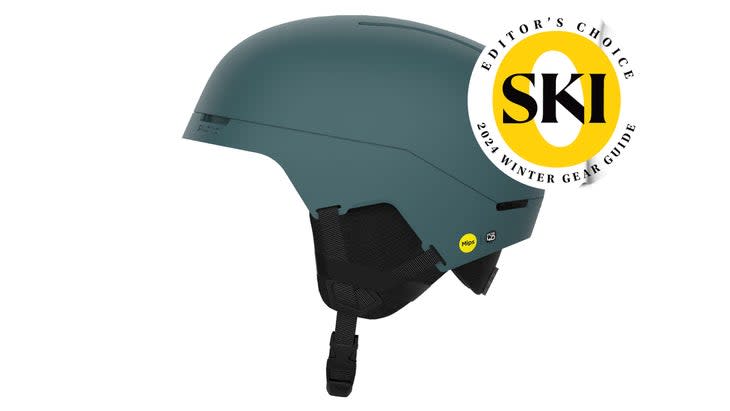
Weight: 510 grams (M)
Sizes: S (53-56 cm), M (56-59 cm), L (59-62 cm)
Protection: MIPS, plus EPS 4D, Salomon's patented technology that absorbs an additional 30 percent of shocks from oblique impacts
Pros:
Clean design
Adjustable fit
Most durable rubber goggle retainer we've seen
Cons:
Comes with six well-placed vents, but they are permanently open; testers wished for better vent control
In an age when some products are overcomplicated and overdesigned, the Salomon Brigade MIPS helmet won over testers for its understated minimalism. "My favorite helmet of the test. It's fairly simple and not feature rich but comfortable, good looking, and performed well," wrote tester David Anhalt. Others praised its sleek, low-profile build. "It's not a flashy, 'Hey, look at me!' helmet," wrote one tester. "It's more like a 'I'm dialed and don't need to show off,' helmet." Some helmets come with an attached plastic clip on the back to hold your goggles in place, but they tend to break or fall off. Salomon solved that problem with an integrated rubber strap that's not going anywhere. The chin buckle is old-school but easy to use. The Brigade comes in a MIPS and non-MIPS version (which is $70 less). The MIPS one has an extra layer between the foam and the liner to help divert rotational impacts to the brain in case of a fall.
Bottom line: Resort skiers and riders looking for a safety-first, streamlined look will appreciate this helmet's no-frills style.
Best For Plus-Size Heads: Giro Owen ($240)
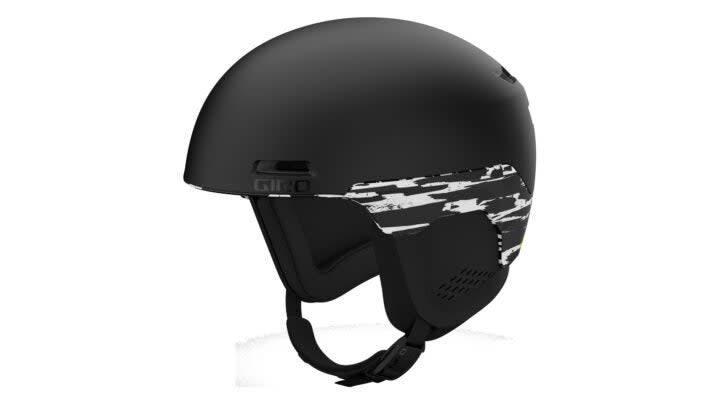
Weight (size medium): 440 grams
Sizes: S (52-55.5 cm), M (55.5-59 cm), L (59-62.5)
Protection: Giro's Spherical Technology, which is developed in partnership with MIPS.
Pros: Intuitive magnetic chin strap that isn't bulky and was easy to use with gloves on
Cons: A hard foam over the ears made it tough to hear friends talking on the chairlift (could be a pro, depending on who you're with)
Tough, comfortable, and good looking are words testers used on repeat to describe the Giro Owen, a favorite amongst our test crew. If you ski the resort and the backcountry, chances are you want one helmet that can handle both environments. The Giro Owen is built for resort shredding but it performed well in the backcountry, too, thanks to lightweight construction and an easy on-off magnetic chin strap that made transitions a breeze. One tester really put the Owen through the wringer, launching off a windlip in low visibility and smacking his head on impact. "I hit my head pretty hard, and I was glad I had this helmet on," tester Dan Abrams wrote. You've got to take the helmet off to open or close the eight vents, but the control function is nice to have. Bonus: The fleece liner on the inside comes with an antimicrobial treatment, a boon for those who sweat and stink up their helmets on hikes. In terms of fit, this is a spacious helmet--comfort is king--and it might work best for those with rounder or larger-sized melons.
Bottom line: A versatile inbounds or backcountry helmet for those with plus-size heads.
Marker Confidant Tour ($140)
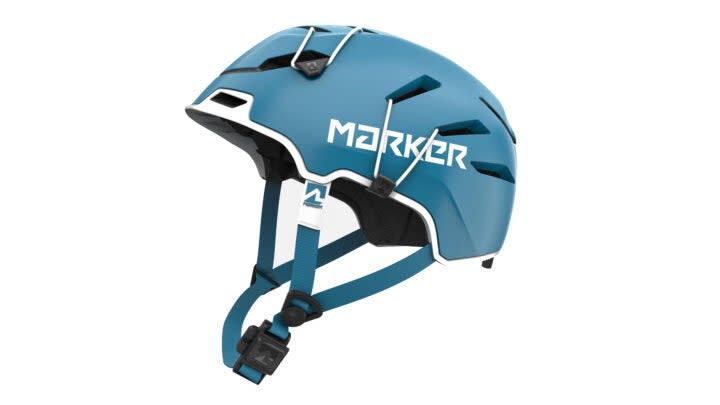
Weight: 363 grams (M)
Sizes: S (51-55 cm), M (55-59 cm), L (59-63 cm)
Protection: Marker's 360deg RTS system, which keeps the head centered in the helmet for maximum security.
Pros: Super lightweight with ample vents for the backcountry
Cons: No vent closures and a lot of extraneous straps
Marker's new Confidant Tour helmet uses the same general design as Marker's existing Confidant helmet but lightens the load for the backcountry. This is an ultralight, fully featured helmet designed for ski mountaineering and big backcountry days where every gram matters. A strap in the back holds your goggles in place, the straps up front secure your headlamp for dawn patrol missions, and it has a magnetic chin strap. Most of all, testers praised the Confidant Tour for its adjustability to fit a wide range of heads and for its featherweight feel. "This helmet convinced me that I should add a backcountry specific helmet to my quiver," wrote tester Molly Street. "So lightweight, but unlike many backcountry-specific helmets, this one maintains comfort and fit." It's padded like a resort helmet, but weighs next to nothing. "Magic?" one tester asked. The earpads easily Velcro on and off if you want to slim it down further. This helmet is also safety certified for cycling if you want to ride your bike to the backcountry trailhead or streamline your helmet quiver.
Bottom line: As one tester said, this helmet is "Custom built for a dawn patrol couloir bagger."
Best For Eco-Conscious Skiers: Bolle Eco Ryft Pure MIPS ($220)
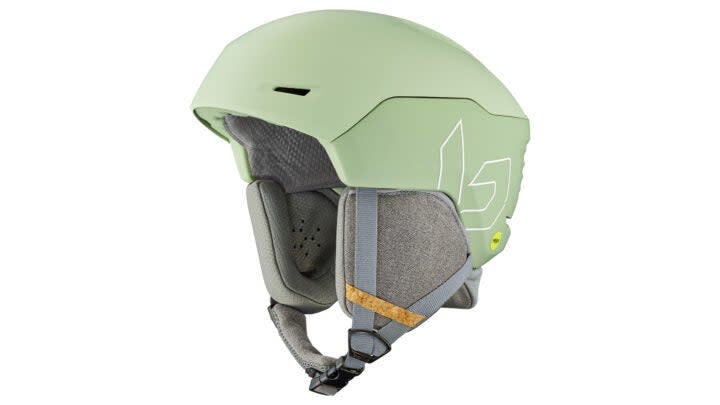
Weight (size medium): 545 grams
Sizes: S (52-55 cm), M (55-59 cm), L (59-63 cm)
Protection: MIPS, plus Bolle's AViD Progressive EPS, which combines strategic ventilation with progressive shock absorption.
Pros: The most ventilated resort helmet in the bunch
Cons: A little on the heavy side
You know you're wearing a good-looking headpiece when you get compliments from strangers on the chairlift about your helmet. That's what happened to one tester who was wearing the Bolle Eco Ryft Pure MIPS. But the reason you'll choose this helmet is because it's got some of the best ventilation of any we tested. Six well-placed vents release hot air, and testers didn't overheat even on steamy in-bounds hikes. "I appreciated the easy-to-find vent adjustment and the oversized cinching dial that was easy to turn with gloves on," tester David Anhalt wrote. Other testers described the fit and padding as both "vacuous" and "plush." Everything in this helmet--outer shell, straps, earpads, goggle retainer, padding--is made from recycled or bio-based materials. The helmet also comes in a non-MIPS version called the Ryft Pure for $50 less.
Bottom line: If you run hot and appreciate recycled goods, this is a great helmet for you.
Best For Park and Freeride: Smith Method ($140)
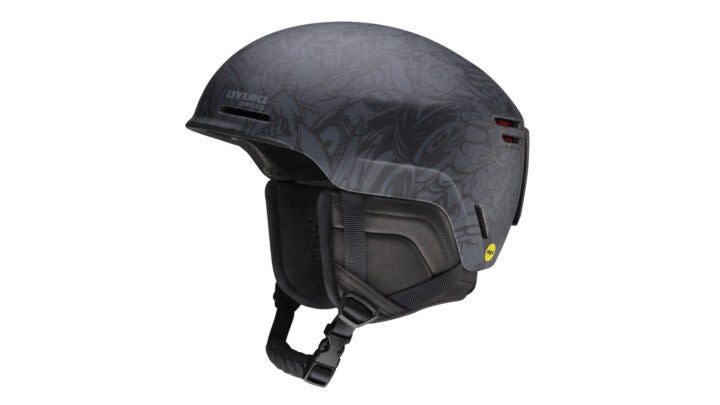
Weight (size medium): 400 grams
Size range: S (51-55 cm), M (55-59 cm), L (59-63 cm), XL (63-67 cm)
Protection: MIPS, plus Smith's zonal Koroyd, which crumples and absorbs energy in the event of a crash.
Pros: An out-of-the-box perfect fit.
Cons: No vent control, no fit adjustment.
"Damn, was this helmet comfy," one tester commented. The new Smith Method helmet embraces minimalism with a clean, gimmick-free design that gets the job of protecting your head done without being over-the-top in any way. "This helmet was bare bones, which might be its most standout feature: simplicity," reported another tester. With no extra bulk and minimal padding, the helmet feels extremely lightweight, but since it has fixed vents and runs a bit warm, we wouldn't recommend it as a backcountry helmet. The Method comes with the MIPS system for brain protection from rotational impacts; select colorways come in a $110 non-MIPS option, making this the most affordable helmet in the test. For those with jumbo heads, it comes in a wide range of sizes. One colorway of the Method is a collaboration with Japanese accessories brand Oyuki, with graphics illustrated by Australian artist and muralist Mike Shankster. The earpads are removable if you prefer to wear a beanie underneath. It pairs seamlessly with Smith and non-Smith goggles.
Bottom line: Perfect for the park or freeride skier who wants a steezy, lightweight helmet without anything extra.
Most Cushioned: Uvex Ultra MIPS ($225)
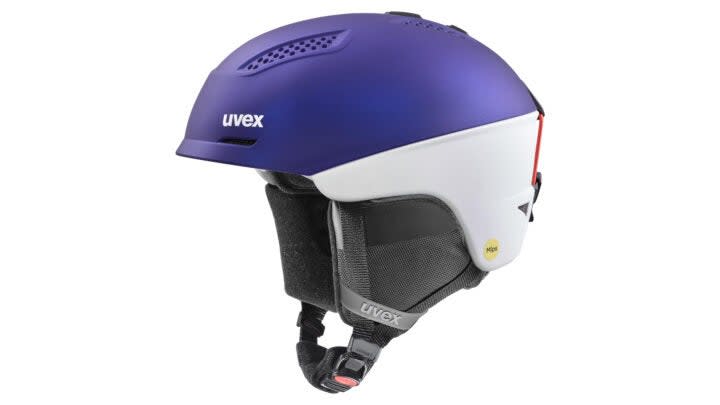
Weight (size medium): 550 grams
Sizes: S (51-55 cm), M (55-59 cm), L (59-61 cm)
Protection: MIPS
Pros: Durable, sturdy feel with maximum protection
Cons: Less breathable than other helmets we tested
Testers couldn't find much to quip about with the crowd-pleasing Uvex Ultra MIPS. This is the hardhat of skiing: dependable, deliberate, and nothing too fancy or decorative. Want the best in protective headwear? Of course you do. Equipped with MIPS, this helmet has a low-friction layer between the liners that offers subtle, multi-directional movement that blocks rotational forces to the brain in the event of an angular impact. The vents look like a pasta colander--small holes dot the top of the helmet--and though testers appreciated the adjustability, they didn't seem to let out quite enough steam. "Ample padding and tiny vents equal a hot head," wrote one tester. (Upside: You can replace or pull out and wash the inner lining if you sweat a lot.) That cushion did help with a secure, solid fit, though, and a big knob on the back ensured a custom, dialed-in feel. A ratchet system on the chin strap felt new and novel, but "releasing the chin strap with gloves on was tough," wrote one tester.
Bottom line: A reliable workhorse of a helmet for a wide range of all-mountain skiers.
How to Buy
You know it's time for a new helmet if your existing helmet has been damaged from a big crash or if it's been more than a few years of heavy-duty use. Look for helmets equipped with a safety system like MIPS, which stands for Multi-Directional Impact Protection System. This is a thin layer of lining between the shell and the foam that allows the helmet to rotate on impact, cutting rotational forces to the brain if you take a big fall. Some brands have developed their own proprietary technology that offers similar protection to MIPS.
In terms of fit, look for a helmet that's snug but not tight. To figure out what size you are, measure your head circumference with a soft tape measure just above your ears and about an inch above your eyebrows. Most helmet brands use centimeters in their size ranges. If the helmet shifts on your head, it's too big. If it's pinching, it's too small. Many helmets come with an adjustment knob on the back to fine-tune the fit. Don't forget to try your helmet on with your goggles to make sure there's no dreaded gap.
How We Test
Number of Testers: 10
Number of Helmets Tested: 13
Inches of Snow Tested In: 710
Number of Multi-Day Backcountry Hut Trips Taken: 3
Major Impacts to the Head During Testing: 1
To test snow helmets, we recruited ten skiers--all with medium-sized heads--with discerning tastes and a wide range of backgrounds. Testers included a ski coach, a ski-industry product developer, a graphic designer, a mustachioed chef, a lift maintenance electrician, a doctor who volunteers with ski patrol, and one very brainy guy who builds surgical robots. All testers were based in North Lake Tahoe, California, during the area's second snowiest winter on record. In between long bouts of shoveling and snow removal, testers wore these helmets inbounds everywhere from Mammoth Mountain to Snowbird and on long-haul days in the backcountry from the Sierra Nevada up to British Columbia.
Meet Our Testers
Category manager and Outside contributing editor Megan Michelson is a freelance journalist and lifelong skier based in Tahoe City, California. She's been covering the ski industry as an editor and writer for over 15 years and contributes regularly to SKI. She's skied off volcanoes in Iceland, down couloirs in Chile, and through waist-deep powder in Japan--and called it all "work." Other key testers quoted here include Peak Design CFO and sauna enthusiast David Anhalt, graphic designer and backyard backcountry skier Molly Street, and Flylow Gear founder and dumpling connoisseur Dan Abrams.
More from the 2024 Winter Gear guide
The Best All-Mountain Skis of the Year
The Best Carving Skis
The Best Alpine Ski Boots of 2024
For exclusive access to all of our fitness, gear, adventure, and travel stories, plus discounts on trips, events, and gear, sign up for Outside+ today.

